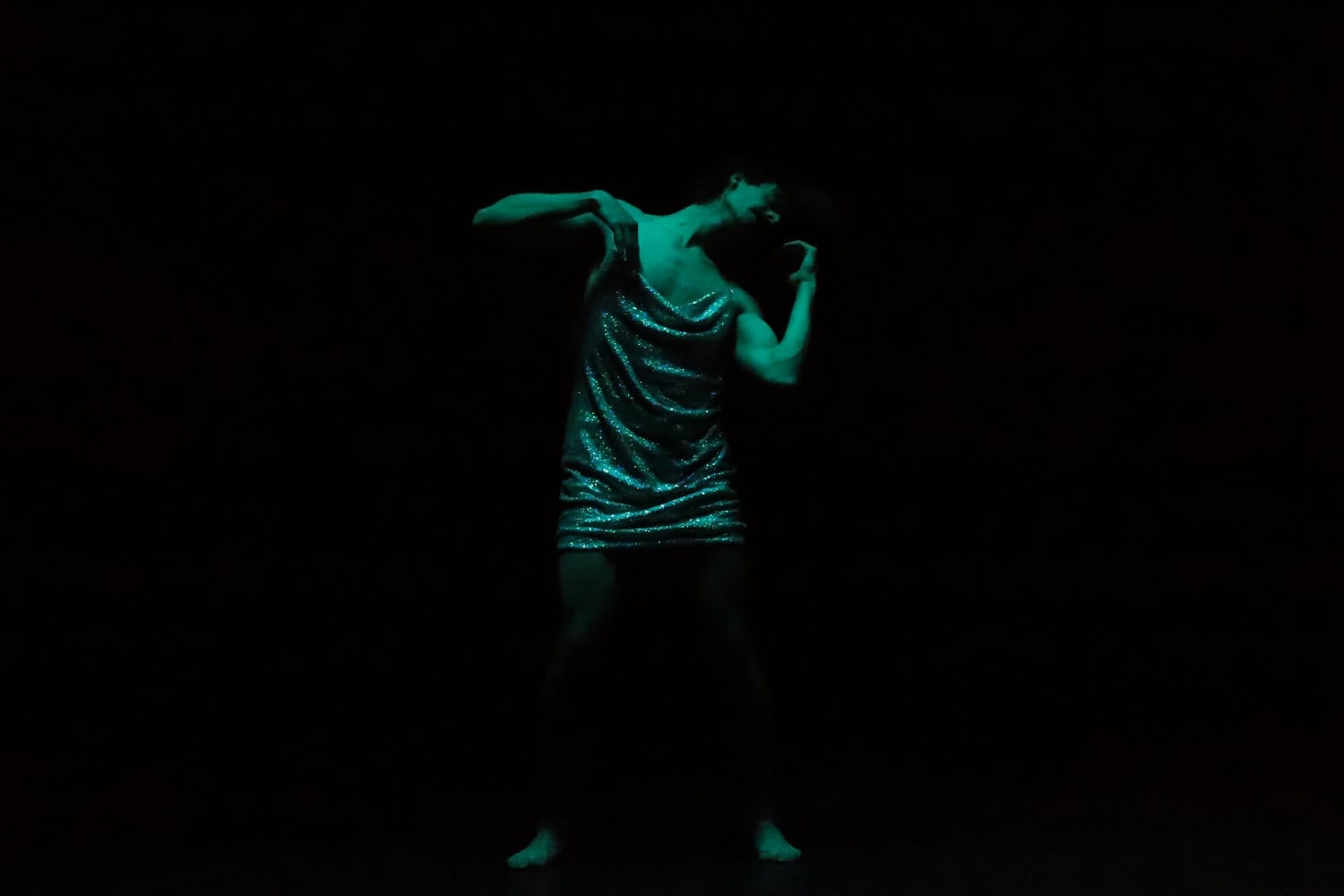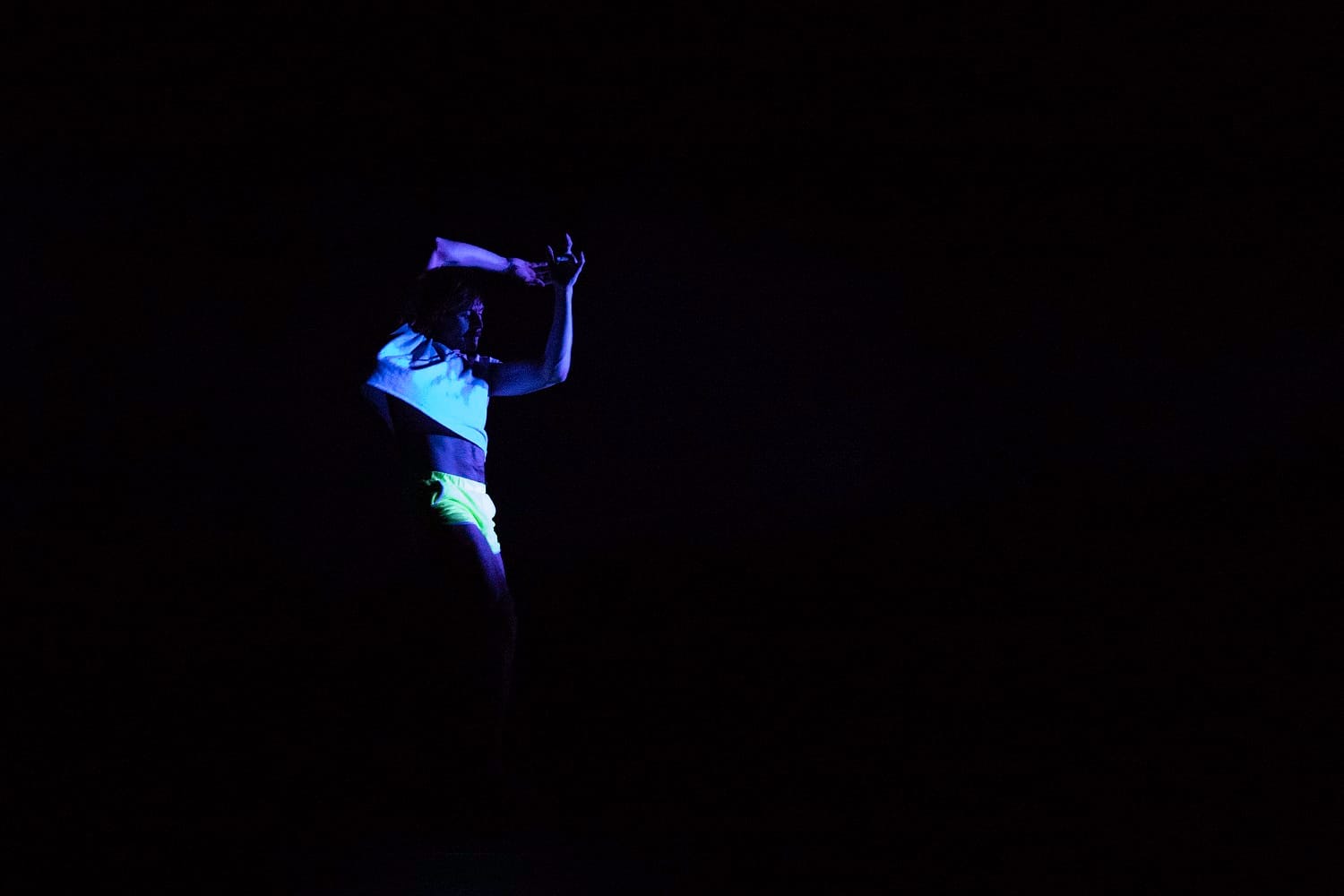What’s the best way to tell area residents about plans for a new asylum shelter nearby?
The government should tell communities directly about plans for new asylum shelters, some activists and politicians say.
Nick Nikolaou’s new show Anatomy of a Night is an exploration of memory and identity through dance, spoken word, runways and lip-syncing.

Nick Nikolaou thinks back to one of the last club nights they attended in Dublin before the pandemic, bookmarked as an epiphanic event.
It was in January 2020, the choreographer says, and they had gone to a DJ set in the Sound House, an intimate live venue on Eden Quay which often caters to the city’s more left-of-centre, underground music scenes.
The DJ for the occasion was activist and founding editor of Gay Community News Tonie Walsh. He was spinning George Monroe’s 1989 cover of the 10cc hit “I’m Not In Love”.
Nikolaou recalls the initial flood of excitement as they went in. “Everyone looked so great, and you have this master, this icon at the decks, guiding you through an experience.”
Then they directed their gaze towards a group huddled around the front of the decks. All in their late teens or early twenties, Nikolaou says. “And they were all sniffing poppers.”
The spectacle, a 1980s Irish LGBT icon performing to a new generation of club-goers, brought Nikolaou to a moment of clarity. “This is queerness,” they say.
They clung to that memory, and channelled the ripples of thoughts and ideas, they say, into their debut show at the Dublin Fringe Festival, Anatomy of a Night.
An exploration of memory and identity, Anatomy is billed as an odyssey into underground queer club spaces, with dance, spoken word, runways and lip-syncing.
Structured to hit each beat in a night out, the performance draws from Nikolaou’s own experiences and is intended as an immersive “love letter to the queers, the weirdos, the trailblazers [and] the nightwalkers”.
“I’m trying to create the show that needs to come out of me right now,” Nikolaou says. “And the show that needs to come out of me is this show.”
The Dance Ireland building at Liberty Corner in the north inner-city is almost empty on the first Friday evening of September.
Its silence, however, is broken by a thunderingly motoric bass drum, which pounds from a set of speakers in one of the third-floor studios.
As the dance track blares, the voice of Nikolaou, breaking down for their producer how Anatomy is to be structured, echoes through the hallway.
The performance is divided into two, with a dramatic half and a club half.
The former is composed of Nikolaou’s monologues and dance numbers. At its climax, the drama is to segway seamlessly into a full-on club, hosted by a different DJ for each night of its five-date run, between September 20 and 24.
They wanted to make sure each night had a starkly different atmosphere, says Nikolaou, ideally drawing in a different kind of audience for each.
“There are so many variables that can change the night, which excites me,” they say, “and I wanted to be able to highlight different queer and queer-adjacent DJs from Dublin.”
The line-up, chosen by Nikolaou as a broad representation of the city’s club scene, includes up-and-coming producer Bambi, non-binary computer-generated artist ALYXIS, and Tonie Walsh, a veteran of the capital’s LGBT scene.
Nikolaou grew up in north-western Greece, in the city of Kastoria, bordering Albania.
At 18, they moved to Thessaloniki, and two years later, began to take contemporary and jazz dance classes.
In Thessaloniki, there was just one gay nightclub, they say. “It just didn’t feel enough, mainly because I was more political than the people going there.”
They began to frequent anarchist squats and helped form anarchist-queer groups, which would organise club nights.
“We were making these to show that there doesn’t need to be one kind of club, that there can be different, better ways of having fun,” said Nikolaou.

In 2012, they moved to Dublin, falling for the city almost immediately, and becoming involved in the Dublin Youth Dance Company.
What resonated with them at the time was a sense of pointedness in the political aspirations of the capital’s queer nightlife.
“There was a strong political undercurrent in those spaces, and it felt like whenever you went to a space, you could look across the room and feel like ‘this is my community’,” they said.
They cherished the spirit of togetherness in such spaces as The George and Mother, a club night in Lost Lane, said Nikolaou.
In more recent times, however, they argue, the drive to create wholly inclusive spaces has lost momentum.
“I have specifically decided to remove myself from any spaces that are predominantly white cis-male spaces,” they say, “because they seem to be holding a very big amount of space without creating something for the wider community.”
Anatomy was developed when Nikolaou stepped away from Dublin momentarily, enrolling on a master’s course for contemporary dance in the University of Limerick (UL) during 2019.
During their studies, they became fascinated with the concept of memory. “We were doing a practice one day, based around memory, and I just remember, something coming vividly to me.”
This was, they say, their first ever memory, coming from around the time when they were barely a toddler. “I was dancing to ‘All That She Wants’ by Ace of Base. That’s my oldest memory.”
Discovering this latent childhood memory prompted them to pursue the subject down a creative rabbit hole.
In 2021, this chase culminated in an early version of Anatomy, developed as part of a joint initiative between the Liz Roche Company, UL, the Lir Academy and Dance Ireland.
As part of the initiative, Nikolaou was asked to produce a collaborative piece with a student in the field of lighting design.
“I wanted to research memories, and as I was thinking of those that were the most affiliated with light, it always came back to clubbing,” they said.
Kevin Murphy, a Dublin-based lighting designer, was studying an MFA in stage design at the Lir when he was paired with Nikolaou.
Murphy had very little experience with club culture before meeting Nikolaou, he says. “So, over the course of six weeks, he taught me enough about it, and I brought my expertise in lighting to build something very dynamic.”
Says Murphy: “I tried to reflect, tried to capture Nick’s body experiencing different memories.”
Murphy’s eye for lighting was able to depict the broken nature of memories from Dublin’s nightlife, says Nikolaou.
“Because of the lights, the influence you are under, the beat of the music, the sweat, you only see fragments, bodies being hit by specific lights, weird shapes,” they say.
Rarely, can one person recall full images of a room, they say, and Anatomy’s objective to represent this feeling of being only able to catch glimpses of the past.
The original show ran for 15 minutes. But it clearly could have been much longer, says Nikolaou. They widened their focus.
Now, Murphy says, “it unpacks why queer spaces are important to Dublin, and why they need to be preserved”.
Structurally, Nikolaou’s expanded vision was to experiment with the concept of autobiography.
Split into seven sections, Anatomy’s narrative is built with extracts from Nikolaou’s life, which are arranged to imitate the passage of time on a single night out, from sunset until sunrise.
“You know, it begins where everyone is jolly after one or two drinks,” they say. “Then it reaches a euphoric part where everything comes together, before the dirtiness arrives, you lose the initial high, and it’s five o’clock in the morning, but the tunes are still going.”
Providing that soundtrack to Nikolaou’s odyssey is electronic musician and filmmaker Rory Sweeney, who serves as both the production’s sound designer and its DJ for the opening night.

Sweeney’s oeuvre as a producer tends towards electronic music that is more cacophonic and frantic in its tempo, releasing albums that draw from the likes of digital hardcore, gabber and jungle.
But, he says, he is as fond of traversing the dance spectrum, incorporating in such styles as vogue music and Jersey club, more immediately associated with the queer club scene.
“A lot of this is going between pop and contemporary club,” Sweeney says, “but there are moments, like in a runway section, where I am playing weird hyper-pop.”
Sweeney’s versatility fit with Nikolaou’s criteria, insofar as the choreographer was looking for an individual who could both meet their precise vision in certain moments, while also being able to cut loose and “go crazy” at other times, the choreographer says.
As opposed to fixating on one singular sound, Sweeney says his purpose was to capture a sense of place, with The George a major reference point. “Really when we talked about this, the focus was on queer club spaces.”
Says Nikolaou: “I’m all about collaboration, putting the trust in someone else. There are some scenes that are specific for me, with exact songs, but this is all about building something together.”
Fundamentally, Anatomy is Nikolaou’s personal story, they say. But within that exploration of self, they are as determined to zoom outward, creating a story of the city’s club culture past, present and future.
Part of their attraction towards involving young DJs like Sweeney is that it brings attention to the scene’s potential down the line.
“Rory, or someone like Bambi, they are young, and I want to highlight the youth, the future of this culture,” they say.
Meanwhile, asking Tonie Walsh was a way to draw a throughline from the 1980s up to the present.
“I want to show the versatility of queer and queer-adjacent club spaces,” they said. “They don’t have an age.”
[UPDATE: This article was updated on 7 September at 1.39pm to add one of the organisations involved in the lighting design project.]
Get our latest headlines in one of them, and recommendations for things to do in Dublin in the other.